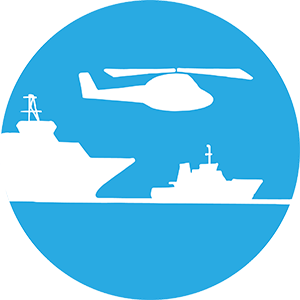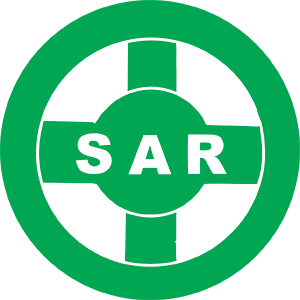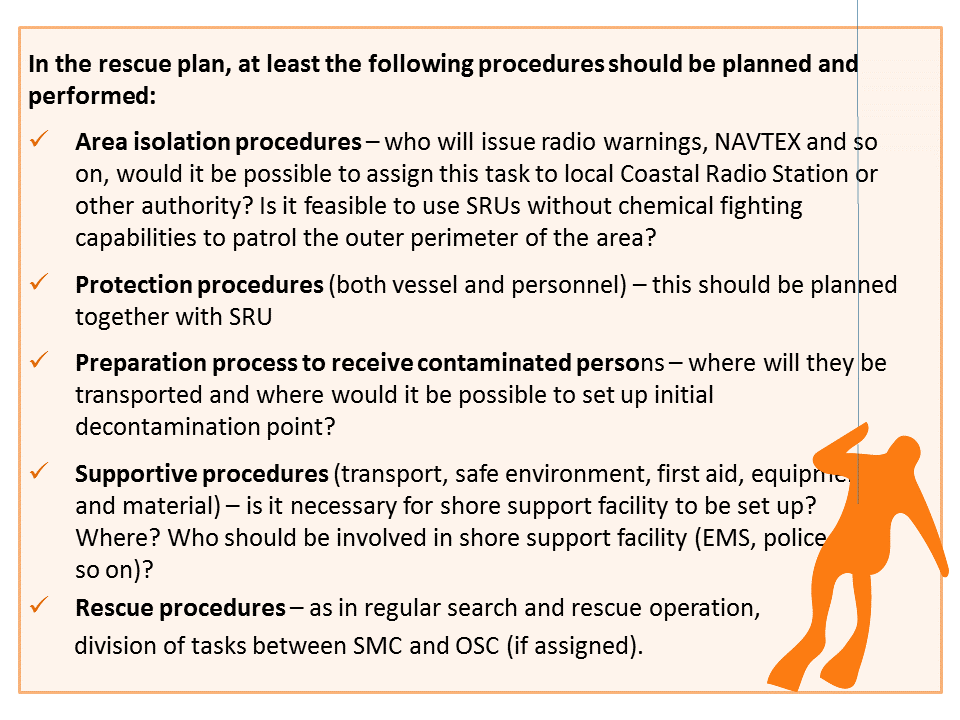Rescue Operation, Executing


Rescue Operation
Once SRUs have arrived on scene, RCC must create a rescue plan. Depending on the situation, RCC has now many options. As usual, person’s safety will take priority over anything else. And although SRU crew’s safety is the responsibility of SRU’s captain, RCC must keep their safety in mind when assigning tasks. Because if something happens to the SRU, who is going to rescue them?

It is likely that incidents involving HNS may take longer to resolve than regular SAR incidents. Therefore, it is important that the planning also involves replacement and/or increase of SRUs and RCC personnel, food and drinks for both rescuers and rescued persons and so on. RCC must consider if there is any special equipment that may be needed but which is not available on site.
Executing
After the planning process is completed and the initial action plan formulated, SMC/OSC should consult with the master of the DV to finalise on-scene rescue plan.
This first on-scene rescue plan should include at least following information:
- Planned tasks and possible actions on-scene for each SRU considering their capabilities – who will enter hot zone, who will be a platform for initial decontamination, who will transport rescued persons to shore support facility?
- HNS risk information (explosive, flammable etc.) – information from HNS experts
- Status of the distressed vessel (HNS situation on-board) – information supplied by DV captain
- Area restrictions – hot zone, warm zone, cold zone, working zones, who can enter?
- Safe direction for SRUs to approach and authorization process to enter the restricted area – consider wind, drift, establish reporting procedures
- Detection and monitoring plan – which SRU has the capability to do that and will this be their only task?
- Entry points to the warm and hot zone
- Emergency plan (e.g. withdrawal in case of an unexpected deterioration)
- Estimations / drifting calculations – use experts for HNS dispersion calculations, calculate DV drift
- Regularly Situation reports (SITREPs) to SRUs and other maritime traffic in the area – also establish reporting procedures for SRUs.
Do not get stuck in the initial plan. Monitor situation continuously, assess changes and, if necessary, update the rescue action plan accordingly.
